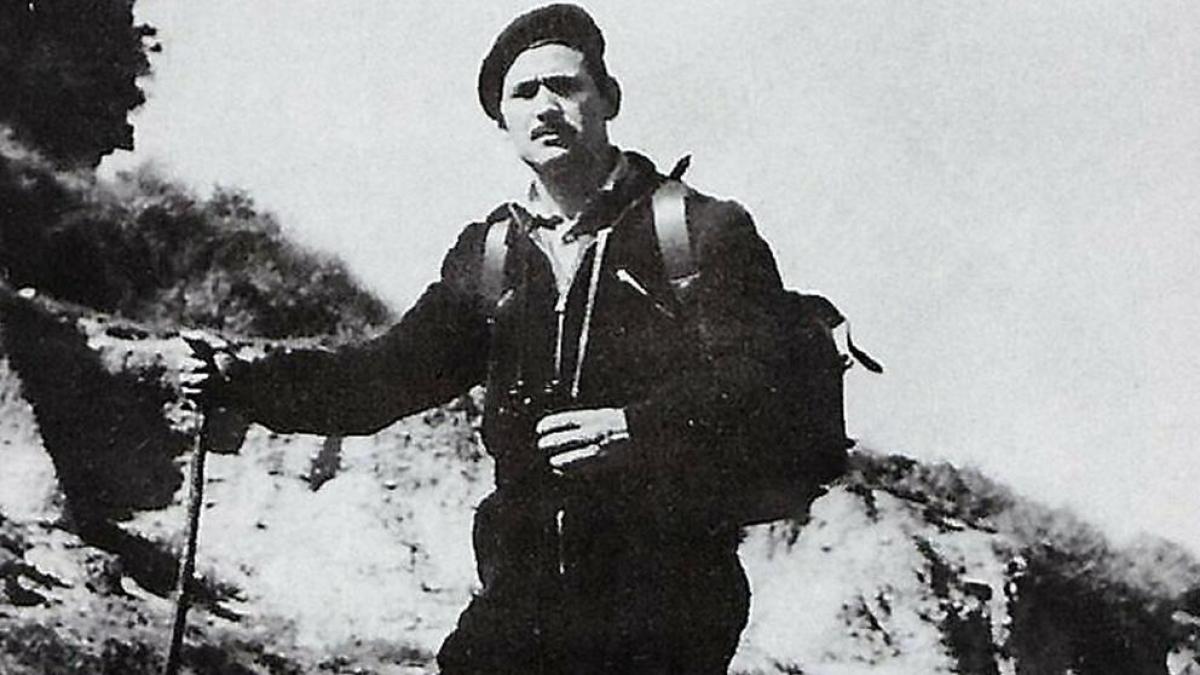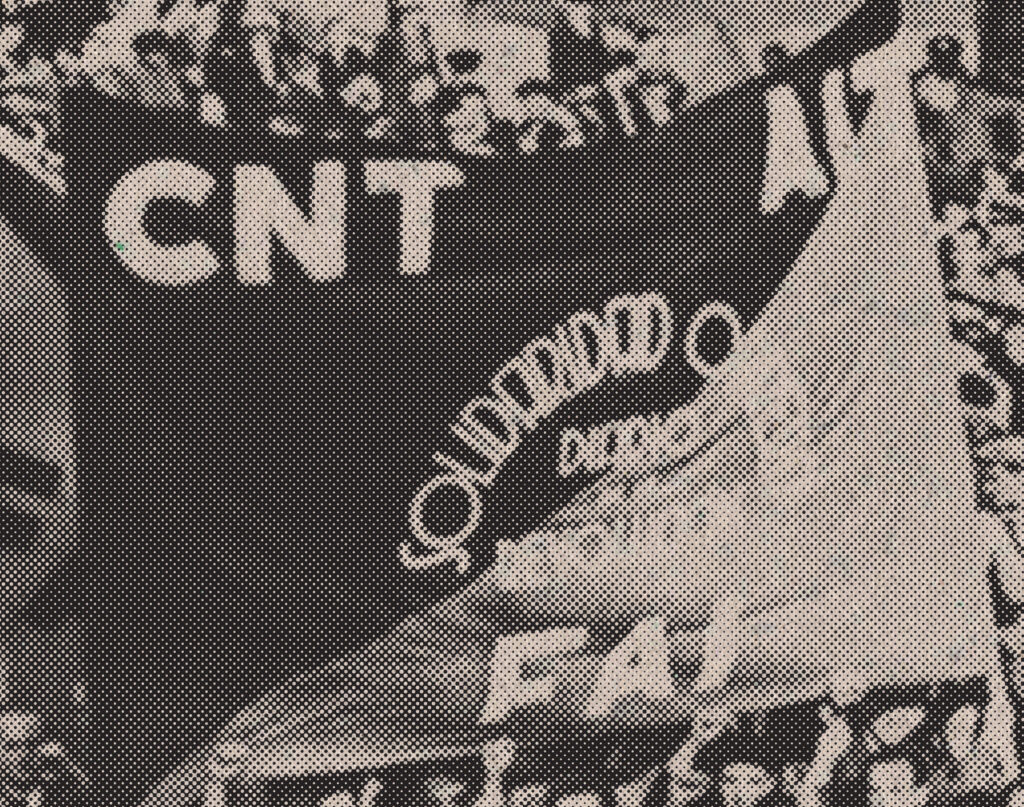What Would They Play? Quico Sabate's Ognis Deck

Welcome to What Would They Play?
I'm Charlie, I'm a storyteller, creative writer and author; I handle the historical sections of the articles.
And I'm Dan, a Commander player who is obsessed with building thematic decks. I connect the stories to Magic cards to create decks that reflect the vibrant tales of the past.
We take famous or not-so-famous figures from history and make Commander decks based on their lives, philosophies, and histories.
Our articles are meant to be part history lesson, part deckbuilding guide. We believe that decks can be expressions of personal philosophies, so a fun way to learn about historical figures -- and flavorful brews -- would be to speculate about what sort of Commander deck a given person would play, given their times, opinions, and philosophies.
It's like a history class, only using the medium of Magic: the Gathering.
This is meant to be an accessible glimpse at the people in question, not a rigorous or definitive biography; we have sources at the end of the article for that!
Let us begin!
Who was Quico Sabaté?
Quico Sabaté (Francisco Sabaté Llopart) was a Spanish anarchist guerrilla, expropriator, revolutionary, soldier, member of the French Resistance against the Nazis, and gunfighter par excellence.
Sabaté first appears in the historical record in the July Days of 1936, where the anarchists of the Confederación Nacional del Trabajo and Federación Anarquista Ibérica (CNT-FAI) crushed General Francisco Franco's putsch attempt and undertook a successful uprising that turned Catalonia largely anarchist.

Sabaté and his brothers fought in the ensuing Civil War. They were forced to flee to France at its conclusion with the rest of the CNT-FAI, where they were placed in concentration camps. Despite this, the militant anarchists of the CNT-FAI formed a backbone of the French resistance movement against the Nazis in the Second World War in exchange for promises of liberating Spain from Franco when the war was over.
The Allies broke their promises and didn't liberate Spain from Franco's fascist dictatorship at the end of the Second World War. Instead, they left the task of fighting fascism to the exiled revolutionary parties of Spain, most notably the anarcho-syndicalist CNT-FAI.
What Sabaté Did (1945-1960)
The CNT-FAI formally gave up on armed struggle in Spain around 1952. However, Sabaté and other anarchist expropriators fought on. They hiked over the Pyrenees mountains between France and Spain. They largely focused their efforts in Catalonia, specifically the city of Barcelona.
Quico Sabaté (along with his brothers, not to mention other skilled anarchist guerrillas, like Josep Lluis Facerias and Ramon Vila Capdevila) returned to Spain after the Second World War to stick a thumb in the eye of dictator Francisco Franco. Their goal was to provoke and inspire a social revolution through propaganda, expropriations, assassinations, and freeing of prisoners.
For this reason, we will be focusing on incidents in the last half of Sabaté's life, and I assure you, due to space limitations, we only graze the surface of the exploits of Quico Sabaté! Onward!
Freeing Prisoners (1945)
Quico Sabaté returned to Barcelona in 1945 and orchestrated the successful freeing of three comrades from fascist custody while they were being transferred between prisons, practically under the noses of the Guardia Civil.
Prisoner release was a top priority of the Spanish anarchists: it exposed the vulnerability of the dictatorship and security forces. Quico Sabaté's unparalleled knowledge of the city of Barcelona was one of his greatest assets in pulling off daring maneuvers like this. Even special police and plainsclothes units, also made up of Barcelona area natives and dispatched specifically to catch Sabaté, couldn't compare with El Quico's encyclopedic mental dictionary of blind-spots, ambush-points, escape routes, and hidey-holes.
An aggressive strategy like Sabaté's is seriously endangered by opposing prison cards, also known as stax pieces. Since many such cards, including Ghostly Prison
Intimidation and Notoriety (1945)
Quico Sabaté was conspicuously brave. His reputation was formidable enough to do a lot of the hard work for him. To quote anarchist historian and contemporary of Sabaté, Antonio Tellez Sola:
"[Sabaté] never operated anonymously. His normal behavior from then on was to approach his victim or victims and say the three magic words: 'Soy El Quico! [I am El Quico].' It was sufficient to paralyze most people. Civilians and military alike offered no resistance."
Sabaté thrived on adrenaline and the legends that grew up around his exploits. Public and open defiance towards the Franco regime were as important as money, guns, or printing supplies. Historian Eric Hobsbawm records an incident in 1945 when Sabaté was caught in the open during an ambush in Barcelona:
"Sabaté's hunch for ambushes was extraordinary. The four laborers coming slowly towards him chatting were, it was clear to him, policemen. He therefore continued slowly and carelessly towards them. At about thirty feet he reached for his sub-machine-gun and took aim.
The war between police and terrorists is one of nerves as well as guns. Whoever is more frightened has lost the initiative. The key to Sabaté's unique career after 1945 lay in the moral superiority he established over the police by the conscious policy of always, when possible, advancing towards them. The four plain-clothes men were unnerved, made for cover and opened a rather ragged fire while he got away. [Sabaté] did not shoot."
Sabaté also was famous for smaller scale acts of bravery. In an era where secret police had nearly unlimited license to Arrest
Like Sabaté, Ahn-Crop Crasher
Expropriations (1945-1960)
Sabaté mostly targeted banks in Barcelona. Banks tend to have a lot of ready cash on hand, cash that would be used to provide supplies, guns, ammunition, safe-houses, printing presses, and paper for leaflets and posters to inspire rebellions among the Spanish people.
Sabaté liked to work with a minimal crew when he hit a bank; less than the bare minimum, in fact. This was to keep the possibility of betrayal even lower than usual, and doing so reflected his daredevil nature. Sabaté had an additional handicap when in action: he refused to draw or fire his weapon unless his opponent made for his own.
All this money expropriated from banks and the wealthy was barely enough to keep the cycle going. Each daring raid funded the next.
Obviously, Sabaté was not the type to linger back while accumulating resources. When he needed funds or material, he went out and seized them from his foes. He would have applied the same philosophy to his hypothetical Commander deck: the only ways to ramp or draw cards in this deck are through attacking. The ramp starts out fast, with Ragavan, Nimble Pilferer
Bomb Threats
This isn't to say that Sabaté or the other maquis limited themselves to just robbery or just spreading anti-fascist propaganda. Sometimes things and people need a good case of explosions. For example:
After 1946, the Allied powers officially and unofficially sanctioned Franco's fascist regime under the guise of his 'anti-communism'. Fascist Spain was recognized by several south American countries, with unofficial trade envoys from America and other "Allied" countries being present in Barcelona. Historian Antonio Tellez Sola notes that these were functionally the same thing as having ambassadors. Quico Sabaté and the other anarchists decided to voice their displeasure. Together with the notable anarchist Facerias, Sabaté and the others executed a plan to bomb the embassies of Brazil, Peru, and Uruguay in 1947.
The bomb failed to explode in the Brazilian embassy (around midnight), and the crew just escaped detection. However, the other two bombs worked perfectly: Sabaté delivering the bomb to the balcony of the Peruvian embassy with the aid of a fishing rod. Nobody was hurt, but the message was sent to the world: resistance to Franco was most assuredly not dead, and his government not uncontested.
All this points to an understanding of the value of a show of force over the use thereof. In Sabaté's Commander deck, he would have had removal and board wipes out on the battlefield to send a clear message to his opponents: direct your attention elsewhere. Pernicious Deed
REVOLUTION
All of the efforts of the anarchists were aimed towards reigniting social revolution against fascism in Spain. There were multiple uprisings against Franco by the Spanish people after the end of the Spanish Civil War in 1939, some numbering in the hundreds of thousands. One particularly noteworthy example was the Barcelona General Strike of 1951.
In 1950 the authorities of Barcelona jacked up the trolley prices by an estimated 40%. The people of the city immediately boycotted the trams, and within a week, the city dropped the prices to their original level. This didn't stop the unrest, and an estimated 300,000 people in and around Barcelona joined in a general strike.
What this had to do with Sabaté--who was out of in a French prison at the time and unable to capitalize on the situation--was that it helped cement his legendary status among the people of Barcelona.
Antonio Tellez Sola writes, that despite the absence of Sabaté from the city, homemade graffiti and pamphlets featuring Sabaté were displayed during the Barcelona General strike. Tellez says:
"Para arreglar 10 de los tranvias id a busear a Facerias.
Contra el Requete, Viva Sabaté!"
Which, roughly translated, means: "To sort it out with the trams, Facerias is your man. To fight against the Requete [Fascist paramilitary groups], with Sabaté we'll win the day!"
The Barcelona general strike was ultimately broken up by the fascists after about two weeks, but the potential for revolution and revolt was there. The authorities were so terrified of retribution that they released most of the people arrested during the strike.
Sabaté's propaganda efforts in Commander have the goal of using your opponents' creatures against themselves and each other, primarily through goading them or Act of Treason
Death and Legacy
Sabaté and the other anarchist expropriators ultimately didn't succeed in their long-term aims for a variety of reasons despite their best efforts. Sabaté was gunned down in 1960 after a multi-day gun battle and chase.
While Franco's dictatorship ultimately ended with his death in 1975, there was no truth and reconciliation commission for the crimes of fascism, nor any widespread punishment of the Guardia Civil, the secret police, or any of the other cogs of the fascist government.
When Quico Sabaté's daughters (along with other anarchists) visited Quico Sabaté's formerly unmarked grave in San Celoni in 1991, they were flanked by police 'to ensure their safety'. This is a nice term for not-so-subtle intimidation.
The anarchists and revolutionaries who fought on to the bitter end did leave a lasting imprint on the Spanish people on the value of rebellion against fascism, passing into folk-legend after their deaths.
A Few Notes on Land Choices
The fastlands (Blackcleave Cliffs
Quico Sabaté's Ognis Deck
View on ArchidektCommander (1)
Land (39)
- 1 Blackcleave Cliffs
- 1 Blooming Marsh
- 1 Bojuka Bog
- 1 Copperline Gorge
- 1 Flamekin Village
- 7 Forest
- 1 Hellion Crucible
- 1 Karplusan Forest
- 1 Llanowar Wastes
- 11 Mountain
- 1 Path of Ancestry
- 1 Savage Lands
- 1 Smoldering Spires
- 1 Sokenzan, Crucible of Defiance
- 1 Song-Mad Treachery
- 1 Spire of Industry
- 1 Sulfurous Springs
- 5 Swamp
- 1 Ziatora's Proving Ground
Expropriating Cards (8)
Bomb Threats (7)
Fomenting Rebellion (8)
Freeing Prisoners (8)
Expropriating Currency (11)
Intimidation (7)
Further Reading on Quico Sabaté
Antonio Tellez Sola: Sabaté: Anarchist Guerrilla in Franco's Spain
Eric Hobsbawm: Bandits
Charles Allison: July 19th 1936 (PM PRESS Website)
Argimiro Ferrero Delgado: Changes to the grave of Francisco Sabaté Llopart aka Quico, plus other anarchist fighters (Kate Sharpley Library)
El Combate (1955), Kate Sharpley Library